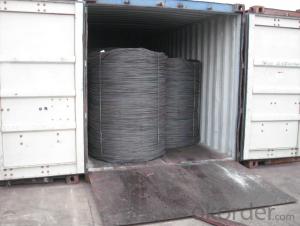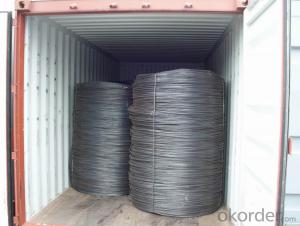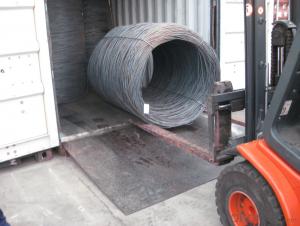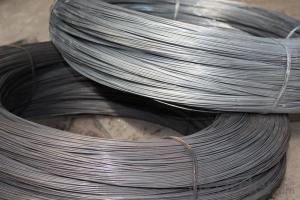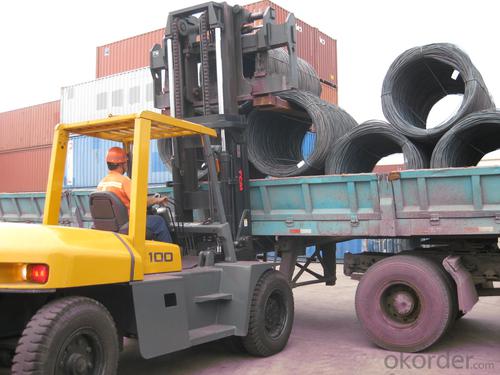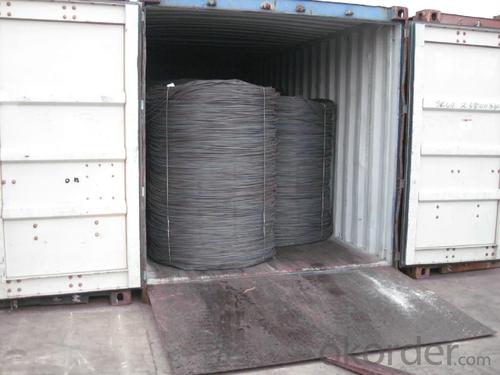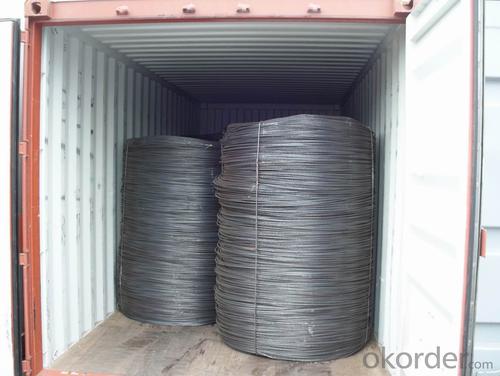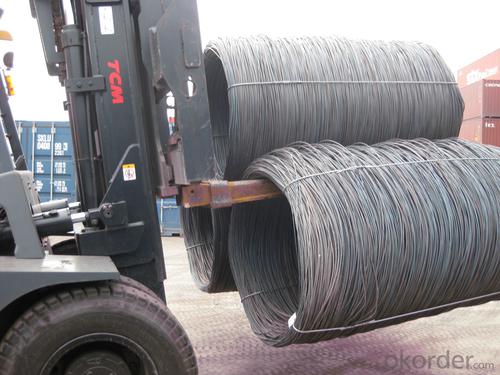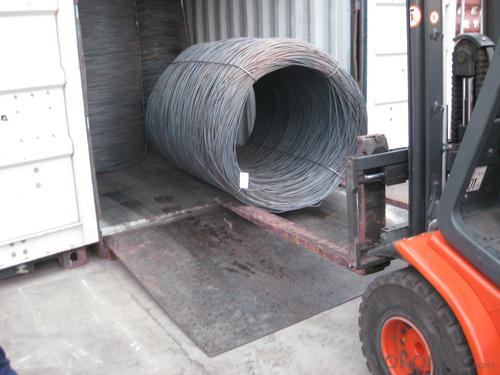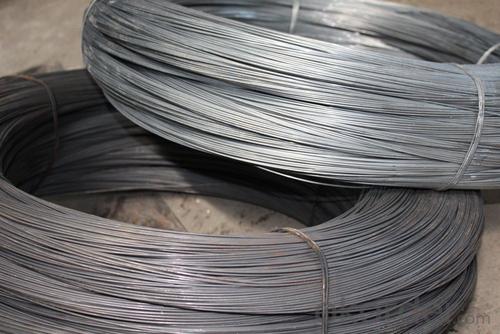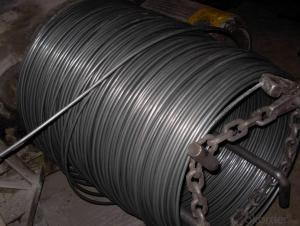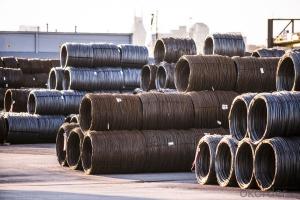SAE1006Cr Carbon Steel Wire Rod 10mm for Welding
- Loading Port:
- Shanghai
- Payment Terms:
- TT OR LC
- Min Order Qty:
- 100 m.t
- Supply Capability:
- 30000 m.t/month
OKorder Service Pledge
OKorder Financial Service
You Might Also Like
Specification
Description of SAE1006Cr Carbon Steel Wire Rod 10mm for Welding:
OKorder is offering Color Coated Steel Coil Prepainted Steel Coil at great prices with worldwide shipping. Our supplier is a world-class manufacturer of steel, with our products utilized the world over. OKorder annually supplies products to European, North American and Asian markets. We provide quotations within 24 hours of receiving an inquiry and guarantee competitive prices.
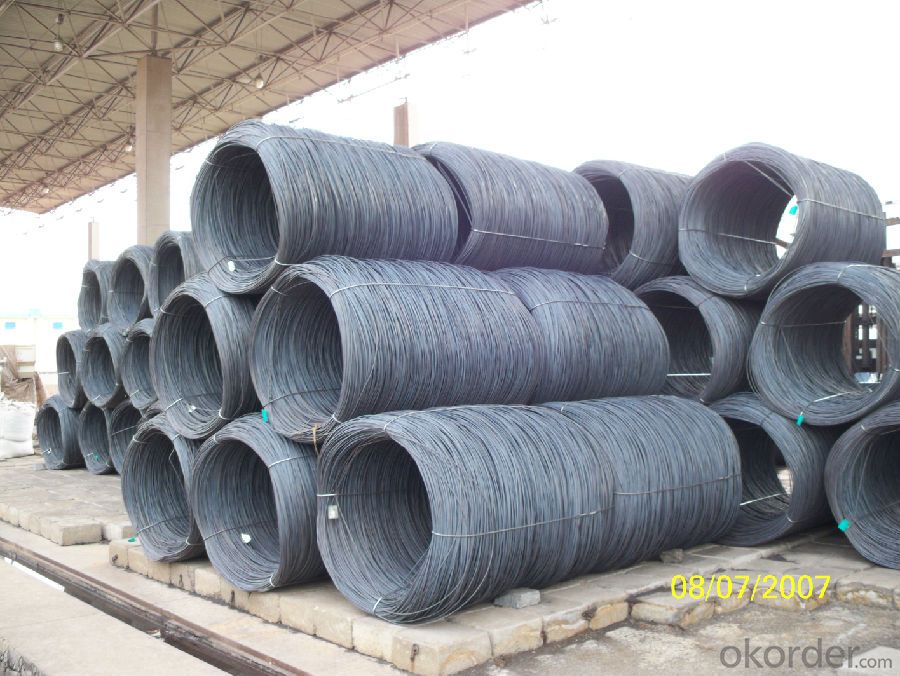
Applications of SAE1006Cr Carbon Steel Wire Rod 10mm for Welding:
Color Coated Steel Coil Prepainted Steel Coil are ideal for structural applications and are widely used in the construction of buildings and bridges, and the manufacturing, petrochemical, and transportation industries.
Main Product Features of SAE1006Cr Carbon Steel Wire Rod 10mm for Welding:
· Premium quality
· Prompt delivery & seaworthy packing (30 days after receiving deposit)
· Corrosion resistance
· Can be recycled and reused
· Mill test certification
· Professional Service
· Competitive pricing
Specifications of SAE1006Cr Carbon Steel Wire Rod 10mm for Welding:
PPGI:
1, Introduction: Color coated steel coils(sheets), i. E. PPGI, also called prepainted steel coils(sheets), are made of galvanized steel coils(sheets) with polymer coatings as surface. It's a new enclosure material and building board with characteristics of light-weighted, heat preserved&insulated, easily installed with bright colors.
2, Production Process: Pretreatment(Degreasing)_Drying_Chromating_Paint Basic Oil_Cooling_Drying_Color Coating_Cooling_Film-covering_Rolling Up
3, Characteristics:
Good at corrosion resistence. Besides zinc coating of the basic plate of galvanized steel sheet, the color coating as the surface has double lifetime to ensure better anticorrosion effect.
With excellent cold bending molded manufacturablity, PPGI products can be processed or directly used as final product. As being light-weighted and conveniently transported, they're widly used to replace wood to save energy.
4.There're thousands of colors can be chosen as per different application. Any color plays well in decoration.
No pollution with high recycling rate, PPGI coils and sheets are strongly recommended as enviroment-friendly products by the government.
5, eye bands and 4 circumferential bands in steel, galvanized metal fluted rings on inner and outer edges, galvanized.
| commodity | SAE1006Cr Carbon Steel Wire Rod 10mm for Welding |
| Techinical Standard: | JIS G3302-1998, EN10142/10137, ASTM A755 |
| grade | Q195,Q215,Q235,SAE1006,SAE1008 SAE1006Cr |
| Types: | Mesh welding |
| Base metal | galvanized, galvalume, cold rolled steel |
| Thickness | 0.14-1.0mm(0.16-0.8mm is the most advantage thickness) |
| Width | 610/724/820/914/1000/1200/1219/1220/1250mm |
| Type of coating: | PE, SMP, PVDF |
| Zinc coating | Z60-150g/m2 or AZ40-100g/m2 |
| Top painting: | 5 mic. Primer + 15 mc. R. M. P. |
| Back painting: | 5-7 mic. EP |
| Color: | According to RAL standard |
| ID coil | 508mm610mm |
| Coil weight: | 2--3MT |
| Package: | Properly packed for ocean freight exportation in 20'containers |
| Application: | Industrial panels, roofing and siding for painting/automobile |
| Price terms | FOB, CFR, CIF |
| Payment terms | 20%TT in advance+80% TT or irrevocable 80%L/C at sight |
| delivery time | 25 days after recepit of 20% TT |
| Remarks | Insurance is all risks |
| MTC 3.1 will be handed on with shipping documents | |
| We accept SGS certificatation test |
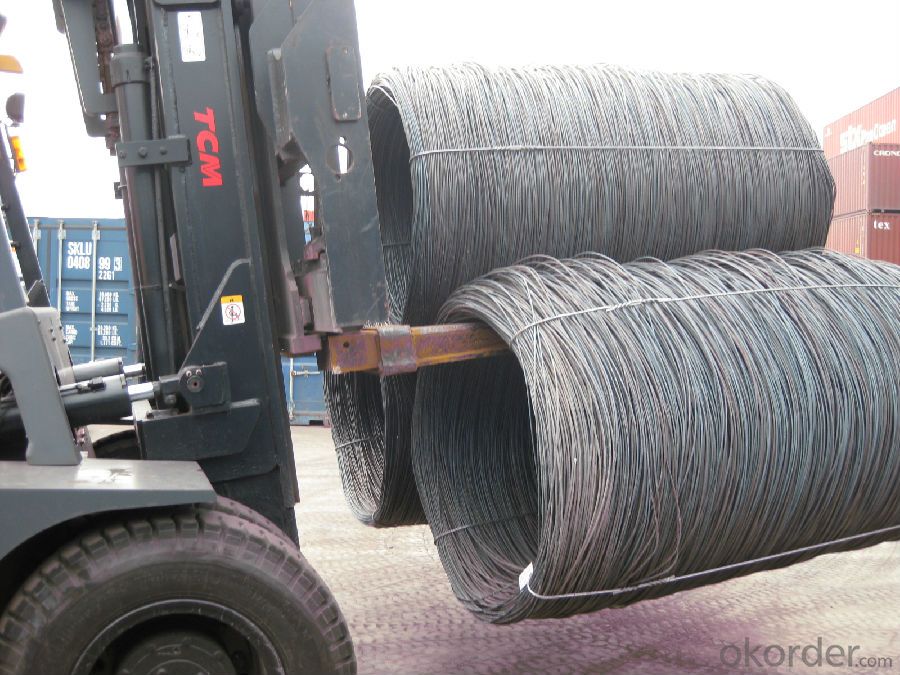
FAQ of SAE1006Cr Carbon Steel Wire Rod 10mm for Welding:
Q1: Why buy Materials & Equipment from OKorder.com?
A1: All products offered byOKorder.com are carefully selected from China's most reliable manufacturing enterprises. Through its ISO certifications, OKorder.com adheres to the highest standards and a commitment to supply chain safety and customer satisfaction.
Q2: How do we guarantee the quality of our products?
A2: We have established an advanced quality management system which conducts strict quality tests at every step, from raw materials to the final product. At the same time, we provide extensive follow-up service assurances as required.
Q3: How soon can we receive the product after purchase?
A3: Within three days of placing an order, we will begin production. The specific shipping date is dependent upon international and government factors, but is typically 7 to 10 workdays.
Q4: What makes stainless steel stainless?
A4: Stainless steel must contain at least 10.5 % chromium. It is this element that reacts with the oxygen in the air to form a complex chrome-oxide surface layer that is invisible but strong enough to prevent further oxygen from "staining" (rusting) the surface. Higher levels of chromium and the addition of other alloying elements such as nickel and molybdenum enhance this surface layer and improve the corrosion resistance of the stainless material.
Q5: Can stainless steel rust?
A5: Stainless does not "rust" as you think of regular steel rusting with a red oxide on the surface that flakes off. If you see red rust it is probably due to some iron particles that have contaminated the surface of the stainless steel and it is these iron particles that are rusting. Look at the source of the rusting and see if you can remove it from the surface.
- Q: How is steel wire rod used in the manufacturing of wire forms for ventilation systems?
- Steel wire rod is commonly used in the manufacturing of wire forms for ventilation systems due to its excellent strength and durability. Wire forms are essentially bent or twisted wire components that are used to support and shape various parts of a ventilation system. In the manufacturing process, steel wire rods are first selected based on their specific mechanical properties, such as tensile strength and flexibility, to ensure they can withstand the demanding conditions of a ventilation system. These wire rods are typically made from low carbon steel, which offers a good balance of strength and malleability. The steel wire rods are then processed through a series of steps, including cleaning, hot rolling, and cooling, to shape them into the desired wire form. The rods are first cleaned to remove any impurities or scale that may affect the quality of the final product. They are then hot rolled to reduce their diameter and increase their length, while also improving their mechanical properties. After the hot rolling process, the steel wire rod is cooled and ready to be transformed into wire forms for ventilation systems. Depending on the specific requirements of the system, the wire rod may undergo additional processes such as annealing or surface treatments to enhance its corrosion resistance. Once the steel wire rod has been processed, it is then bent, twisted, or formed into various shapes to create wire forms for ventilation systems. These wire forms can be used for various purposes, such as supporting air ducts, securing filters, or forming grille components. The use of steel wire rod in the manufacturing of wire forms ensures that the resulting components are strong, durable, and capable of withstanding the harsh conditions typically associated with ventilation systems. Steel wire rod's high tensile strength and flexibility make it an ideal material choice for these applications, ensuring that the wire forms can effectively support and shape the ventilation system components for optimal performance and longevity.
- Q: How are steel wire rods used in the production of screws and bolts for mechanical assemblies?
- Steel wire rods are used in the production of screws and bolts for mechanical assemblies as the primary raw material. These rods are first drawn into wire of the desired diameter, which is then cut into specific lengths to form the screw or bolt. The wire rods provide the necessary strength and durability required for mechanical applications, ensuring that the screws and bolts can withstand heavy loads and provide reliable fastening in various assemblies.
- Q: How are steel wire rods used in the production of wire ropes for ships?
- Steel wire rods are used as the primary material in the production of wire ropes for ships. These rods are first drawn into wire strands, which are then twisted together to form a strong and durable rope. The wire ropes are essential for various applications on ships, such as lifting heavy loads, mooring, and anchoring. Their strength and flexibility make them ideal for withstanding the harsh conditions at sea and ensuring the safe and efficient operation of ships.
- Q: What are the common applications of oil quenched and tempered steel wire rod?
- Oil quenched and tempered steel wire rod possesses unique properties that make it suitable for a diverse range of industries. Its applications include: 1. Automotive Industry: The automotive industry extensively utilizes oil quenched and tempered steel wire rod to manufacture various components, including suspension springs, engine valve springs, clutch springs, and transmission gears. The material's high strength and excellent fatigue resistance make it ideal for these demanding applications. 2. Construction Industry: In the construction industry, this type of steel wire rod is widely employed to produce high-strength wire ropes, prestressed concrete wires, and reinforcement bars. Its exceptional strength and durability enable it to withstand heavy loads and extreme conditions in construction projects. 3. Manufacturing Industry: Within the manufacturing sector, this steel wire rod is utilized to produce high-strength fasteners like bolts, nuts, and screws that require resistance to deformation. It is also used in the manufacturing of machinery components, such as gears, shafts, and springs, where toughness and wear resistance are crucial. 4. Oil and Gas Industry: The oil and gas industry extensively relies on oil quenched and tempered steel wire rod for applications like wireline cables, well drilling components, and downhole equipment. The material's high tensile strength and corrosion resistance enable it to endure the harsh conditions encountered in oil and gas exploration and production. 5. Aerospace Industry: The aerospace industry employs this steel wire rod in the production of aircraft cables, landing gear components, and structural parts. Its combination of high strength, fatigue resistance, and light weight make it an ideal choice for these critical applications. In summary, oil quenched and tempered steel wire rod is a versatile material that demonstrates exceptional strength, durability, and resistance to deformation. As a result, it finds applications across a wide range of industries.
- Q: How is steel wire rod used in the manufacturing of tire cords?
- Steel wire rod is an essential component in the manufacturing of tire cords due to its strength, durability, and flexibility. Tire cords are the reinforcing materials embedded within the rubber of a tire, which provide strength and stability to the tire structure. To create tire cords, steel wire rod is first drawn through a series of dies to reduce its diameter and increase its tensile strength. This process, known as wire drawing, ensures that the wire rod meets the specific requirements for tire cord manufacturing. Once the wire rod has been drawn to the desired thickness, it is further processed by a metal coating process. This involves applying a layer of brass or zinc to the wire surface to enhance its adhesion to rubber. The metal coating also protects the wire from corrosion and improves its fatigue resistance, ensuring the longevity and performance of the tire cord. The coated wire rod is then twisted into strands, typically in a helical pattern, to form tire cord yarns. These yarns are then embedded within the rubber matrix during the tire manufacturing process, providing reinforcement and enhancing the tire's structural integrity. The steel wire rod used in the manufacturing of tire cords plays a crucial role in enhancing the strength and durability of the tire. The high tensile strength of steel wire rod allows the tire cords to withstand the immense forces and loads experienced by tires during operation, including acceleration, braking, and cornering. The flexibility of the wire rod also enables the tire cords to conform to the shape of the tire and absorb shocks, contributing to a smoother ride and improved overall performance. In summary, steel wire rod is a vital component in the production of tire cords. Its strength, durability, and flexibility make it an ideal material for reinforcing tires, ensuring their safety and long-lasting performance on the road.
- Q: What are the quality standards for steel wire rod?
- The quality standards for steel wire rod are defined by various organizations and industry specifications. These standards ensure that the steel wire rod meets certain criteria and performance requirements. One of the most widely recognized standards for steel wire rod is the American Society for Testing and Materials (ASTM) A510/A510M specification. This standard defines the chemical composition, mechanical properties, and dimensional tolerances for steel wire rod. It specifies the required levels of carbon, manganese, sulfur, phosphorus, and other elements in the steel, as well as the tensile strength, yield strength, and elongation properties. In addition to ASTM, other organizations such as the International Organization for Standardization (ISO), European Committee for Standardization (EN), and Japanese Industrial Standards (JIS) have their own standards for steel wire rod. These standards may have slight variations in terms of chemical composition, mechanical properties, and testing methods, depending on the region and intended application. The quality standards for steel wire rod also include specific requirements for surface quality, such as the absence of cracks, seams, and other defects. The surface should be smooth and free from scale or excessive rust. To ensure compliance with these standards, steel wire rod manufacturers conduct various tests and inspections during the production process. These tests may include chemical composition analysis, mechanical property testing, surface inspection, and dimensional checks. Additionally, third-party certification bodies may provide independent verification of the product's quality and adherence to the specified standards. Ultimately, the quality standards for steel wire rod aim to ensure that the product meets the requirements for its intended use, whether it is in construction, automotive, manufacturing, or any other industry where steel wire rod is utilized.
- Q: What are the different types of steel wire rod finishes for improved heat resistance?
- There are several types of steel wire rod finishes that are used to enhance heat resistance. Some common finishes include galvanized, which is coated with a layer of zinc to prevent corrosion and enhance heat resistance; stainless steel, which contains a high level of chromium to withstand high temperatures; and nickel-plated, which provides a protective layer against heat and oxidation. Additionally, there are specialized heat-resistant coatings available, such as ceramic coatings, that can further improve the heat resistance of steel wire rods.
- Q: What are the disadvantages of using steel wire rod in manufacturing?
- There are several disadvantages of using steel wire rods in manufacturing: 1. Corrosion: Steel wire rods are susceptible to corrosion, especially when exposed to moisture or chemical substances. This can lead to a decrease in the durability and lifespan of the manufactured products. 2. Weight: Steel wire rods are relatively heavier compared to other materials such as aluminum or carbon fiber. This can make the manufacturing process more labor-intensive and increase transportation costs. 3. Limited flexibility: Steel wire rods have lower flexibility compared to other materials. This can limit the design possibilities and functionality of the manufactured products, especially in industries where flexibility is crucial, such as automotive or aerospace. 4. Cost: Steel wire rods can be more expensive compared to other materials used in manufacturing. This is particularly true when the demand for steel is high, leading to increased prices. Additionally, the manufacturing process for steel wire rods can involve several steps, which can further add to the production costs. 5. Environmental impact: The production of steel wire rods involves the extraction of iron ore, which can have a significant environmental impact. The extraction process can result in deforestation, habitat destruction, and pollution. Additionally, the manufacturing process for steel requires a substantial amount of energy, contributing to greenhouse gas emissions. 6. Maintenance: Steel wire rods may require regular maintenance to prevent corrosion, such as applying protective coatings or implementing proper storage methods. This can add to the overall costs and time required for product maintenance. 7. Electrical conductivity: Steel wire rods have relatively poor electrical conductivity compared to other materials, such as copper or aluminum. This can limit their usability in certain industries or applications where electrical conductivity is essential, such as electronics or electrical wiring. Overall, while steel wire rods have several advantages in manufacturing, including strength and rigidity, they also have notable disadvantages that need to be considered when selecting materials for manufacturing processes.
- Q: How are steel wire rods used in the production of wire ropes for elevators?
- Steel wire rods are used as the primary material for producing wire ropes for elevators. These rods are first drawn into long, thin wires that are then twisted or braided together to form a strong and flexible rope. The high tensile strength and durability of steel make it ideal for ensuring the safety and reliability of elevator systems.
- Q: What are the different types of steel wire rod surface finishing processes?
- There are several types of steel wire rod surface finishing processes, including pickling, galvanizing, phosphating, electroplating, and powder coating.
Send your message to us
SAE1006Cr Carbon Steel Wire Rod 10mm for Welding
- Loading Port:
- Shanghai
- Payment Terms:
- TT OR LC
- Min Order Qty:
- 100 m.t
- Supply Capability:
- 30000 m.t/month
OKorder Service Pledge
OKorder Financial Service
Similar products
Hot products
Hot Searches
Related keywords

